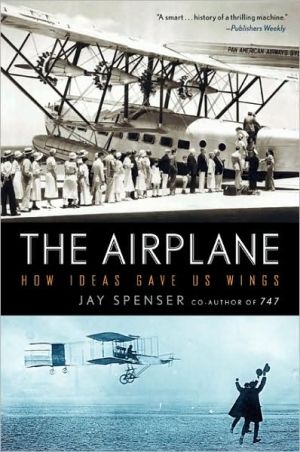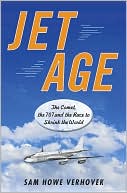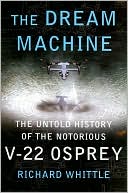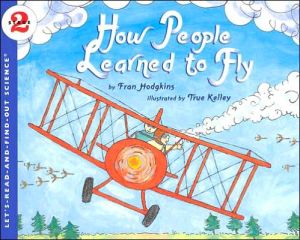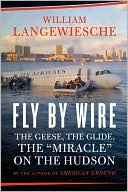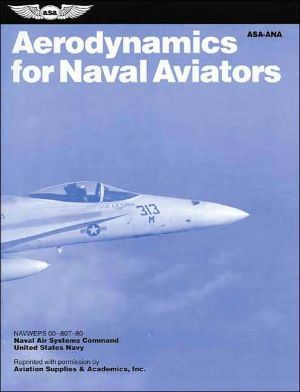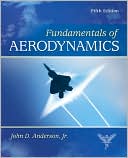The Airplane: How Ideas Gave Us Wings
In this entertaining history of the jetliner, Jay Spenser traces aviation's challenges from the outset, and follows the flow of the simple yet powerful ideas that led us to defy gravity. Here are the pioneers—innovators such as Otto Lilienthal, Igor Sikorsky, Louis Blériot, Hugo Junkers, and Jack Northrop—whose amazing contributions collectively solved the puzzle of flight. Along the way, Spenser demystifies the modern jetliner, examining the airplane from wings to flight controls to...
Search in google:
The inside story of how people invented and refined the airplane. Who were aviation's dreamers and from where did they draw their inspiration? What lessons did inventors learn from birds, insects, marine mammals, and fish that helped us fly? How did the bicycle lead to the airplane, and hot water heaters to metal fuselages? And who figured out how to fly without seeing the ground, setting the stage for scheduled airline services in all weather conditions?In this entertaining history of the jetliner, Jay Spenser follows the flow of simple yet powerful ideas to trace aviation's challenges. He introduces us to pioneers across continents and centuries, sheds new insights on their contributions, and evokes those key moments in history when, piece by piece, such innovators as Otto Lilienthal, Igor Sikorsky, Louis Blériot, Hugo Junkers, and Jack Northrop collectively solved the puzzle of flight.Along the way, Spenser demystifies the modern jetliner. From wings to flight controls to fuselages to landing gear, he examines the parts of the airplane to show how they came into being and have evolved over time. The Airplane culminates in a discussion of Boeing's 787 Dreamliner and explores the possibilities for aviation's future. Publishers Weekly This history of the development of the airplane by Spenser, a former curator of the National Air and Space Museum and author of 747, recasts the Wright brothers' contribution as he widens the scope to aviation history in France, Germany and beyond. Spenser starts with the pioneering work of Yorkshire gentleman Sir George Cayley in the late 18th century, delineates the competitive race between inventors in the early 1900s and culminates (somewhat abruptly) in the world of modern jet airliner travel. Spenser's history reads like a textbook for young, aspiring engineers. Instead of a general chronological approach, Spenser divides the book into sections that each track the development of a different part of the airplane, from the fuselage to landing gear. While this allows him to show how the modern airplane is not a singular invention but rather the cumulative result of thousands of different inventors, trials and errors, it does diffuse the narrative. Still, Spenser's book stands as a smart, and occasionally wonkish, history of a thrilling machine all too often taken for granted. (Nov.)Copyright © Reed Business Information, a division of Reed Elsevier Inc. All rights reserved.
The Airplane\ How Ideas Gave Us Wings \ Chapter One\ Conception\ The Thinker and the Dreamer\ An uninterrupted navigable ocean that comes to the threshold of every man's door ought not to be neglected as a source of human gratification and advantage.\ —Sir George Cayley (1773-1857)1\ \ \ \ In Yorkshire in the northeast of England, a human being first imagined the airplane. This scientifically accurate emergence happened a hundred years before the Wright brothers invented the real thing.\ At first glance, Yorkshire seems an odd place for the science of aviation to begin. However, history shows that creativity flourishes where cultures mix, and England's largest traditional county certainly boasted plenty of that. Celtic tribes lost to the mists of time, marching Roman legions, Angle farmers settling from Germany, and marauding Vikings invading from Denmark all called it home at one time or another.\ The airplane's conceptual inventor was Yorkshire baronet Sir George Cayley. Born in December 1773 at Scarborough on the North Sea, Cayley inherited his title, wealth, and large landholdings upon the death of his father. But a greater inheritance had already come his way at birth, for he possessed a brilliant mind.\ Few people today know Cayley's name even though he single-handedly established the science of aviation and laid a foundation for others to build on. The Wright brothers never would have left the ground without his powerful ideas, for example, but they were far from the first to try.\ That honor belongs to another Englishman, Cayley'sself-appointed disciple William S. Henson. Thrilled by Cayley's visionary writings, Henson galloped off to design a real airplane before the middle of the nineteenth century. Although his premature attempt failed, Henson at least showed the world what the airplane would be.\ If Cayley was the thinker, Henson—four decades his junior—was the dreamer. The two men hardly could have been more different, yet their overlapping efforts synergistically planted the seeds of flight.\ The people of Yorkshire are known for a calm and deliberate nature. George Cayley from an early age broke the mold. Around his tenth birthday, this enthusiastic young aristocrat was excited in particular by news sweeping England: human beings had flown in Europe.\ On November 21, 1783, Jean-François Pilâtre de Rozier and the marquis d'Arlandes ascended into the heavens in a new invention called the balloon. According to the reports, these Frenchmen drifted over the city of Paris for twenty-five minutes, covering 5½ miles (9 kilometers) before setting down safely.\ At that time, the event was hailed as the first time human beings had ever flown. Today we know this was probably not the case. While history does not provide definitive proof of earlier manned ascents, it is quite likely that large kites (a dangerous way to fly, given their propensity for headlong plunges) carried people aloft more than a millennium before the invention of the balloon. The Venetian Marco Polo lends credence to accounts of earlier aerial forays. Writing in the late thirteenth century, he described personally witnessing people flying aboard large kites in China.\ Pilâtre de Rozier and Arlandes' vehicle of 1783 was the brainchild of Joseph and Étienne Montgolfier, two brothers in France's papermaking trade. A majestic blue orb of varnished taffeta decorated ornately in gold, this hot-air balloon was open at the bottom and was launched after being filled with smoke from a large outdoor blaze before its restraints were released.\ Surprisingly, the Montgolfiers did not know why their balloon sailed into the sky. They did not understand that hot air has a lower density than cold air and is thus lighter, so they instead endorsed the classical notion that it was smoke's natural tendency to rise that made their invention buoyant. Lending pseudoscientific credence to this flawed theory, they further asserted that smoke contained a previously unidentified substance—called Montgolfier gas, naturally—that imparts a gravity-defying upward force called levity.\ Their success—and that of their archrival, French physicist Jacques Alexandre Charles with his more advanced hydrogen balloons—launched a rapturous, all-out French obsession with lighter-than-air flight. Part of this euphoria was the uplifting grace of balloons themselves, which lyrically fulfilled humankind's age-old dream of flight.\ But there was more to this rampant "balloonacy" than poetic sensibilities. With the industrial revolution then under way in England and spreading to Europe, balloons also symbolized man's growing technological prowess and the heady excitement of new frontiers. Balloons even became a favorite decorative motif in French furniture, plates, paintings, mantel clocks, and chandeliers.\ Back in Yorkshire, the success of the Montgolfiers kindled in young George Cayley a lifelong fascination with flight. But the balloon itself didn't hold the Yorkshire boy's interest for very long. He quickly decided that heavier-than-air vehicles were flying's future.\ Two factors shaped this conviction. The first was Cayley's belief that a flying machine, to be practical, must be dirigible (steerable) so people could fly it where they liked instead of drifting at the whim of the wind. The second was his delight in a flying toy perfected a year after that first balloon flight by two other Frenchmen, the naturalist Launoy and a mechanic named Bienvenu.\ Launoy and Bienvenu's toy was a rudimentary helicopter with a central shaft, corks at both ends with feathers angled to provide lift as they spun, and a bow (as in bow and arrow) drawn taut by winding its string around the shaft. Letting go the wound-up helicopter released the bow's tension, rotating the feathered shaft to carry it high into the sky.\ In his early twenties, Cayley built and tested a copy of this ingenious device, which for him was more than a mere amusement. In size and performance, it greatly improved on the Chinese top, that ancient and ubiquitous toy consisting of a carved propeller mounted atop a stick. Spinning this stick rapidly between one's hands would send the Chinese top aloft.\ Unlike balloons, man-made amusements such as these were not buoyant. Neither were birds, yet they too could fly. Such being the case, Cayley wondered, why couldn't a man-carrying machine be built that likewise was heavier than the air around it?\ The Airplane\ How Ideas Gave Us Wings. Copyright © by Jay Spenser. Reprinted by permission of HarperCollins Publishers, Inc. All rights reserved. Available now wherever books are sold.
Introduction xi1 Conception: The Thinker and the Dreamer 12 Birth: Wilbur, Orville, and the World 163 Configuration: Shapes and Ideas 374 Fuselage: Of Drums and Dragonflies 565 Wings, Part I: From Box Kites to Bridges 866 Wings, Part II: Cloud-Cutting Cantilevers 1127 Empennage: Whale Flukes and Arrow Feathers 1368 Flight Controls: The Chariot's Reins 1429 Flight Deck: Cockpits for Aerial Ships 17310 Aero Propulsion: Prometheus Is Pushing 20111 Landing Gear: Shoes, Canoes, and Carriage Wheels 23812 Passenger Cabin: Voyaging Aloft 25313 Systems Integration: Making Flying Safer 28114 Today's State Of The Art: The Boeing 787 Dreamliner 292Postscript Tomorrow's Wings: Future Air Travel Technologies 305Notes 311Acknowledgments 319Photo Credits 321Index 323
\ Seattle Times"A story with a new character and a new engineering problem on every other page, each served with a sense of delight in ideas that sent humanity aloft."\ \ \ \ \ Sacramento Book Review"This is a written like an episode of the old TV show Connections, and is just as entertaining."\ \ \ Publishers WeeklyThis history of the development of the airplane by Spenser, a former curator of the National Air and Space Museum and author of 747, recasts the Wright brothers' contribution as he widens the scope to aviation history in France, Germany and beyond. Spenser starts with the pioneering work of Yorkshire gentleman Sir George Cayley in the late 18th century, delineates the competitive race between inventors in the early 1900s and culminates (somewhat abruptly) in the world of modern jet airliner travel. Spenser's history reads like a textbook for young, aspiring engineers. Instead of a general chronological approach, Spenser divides the book into sections that each track the development of a different part of the airplane, from the fuselage to landing gear. While this allows him to show how the modern airplane is not a singular invention but rather the cumulative result of thousands of different inventors, trials and errors, it does diffuse the narrative. Still, Spenser's book stands as a smart, and occasionally wonkish, history of a thrilling machine all too often taken for granted. (Nov.)\ Copyright © Reed Business Information, a division of Reed Elsevier Inc. All rights reserved.\ \ \ \ \ Library JournalSpenser (former curator, Smithsonian National Air and Space Museum) has written an engaging text, using a growth metaphor (conception, birth, etc.) to organize the chapters. Much livelier than his 747: Creating the World's First Jumbo Jet and Other Adventures from a Life in Aviation(cowritten with Joe Sutter), this book has a conversational narrative style that should appeal to both aviation enthusiasts and more general history and technology readers. Occasionally, Spenser's digressions drag on (e.g., on the shape of spindles), but his text is mostly on point and engrossing. The book is international in scope, explaining the exciting ideas about the physics of flight that were shared across borders as well as the international air races and prizes that spurred further development of airworthy vehicles. According to Amazon.com, over 800 works on aviation history have been published in the past three years. Even so, Spenser's book is worthy of addition to public, academic, and, possibly, high school libraries, as the lively writing and the number of photographs set it above many of its competitors.\ —Sara R. Tompson\ \ \
